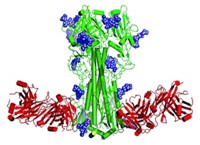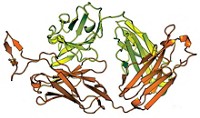Advertisement
Grab your lab coat. Let's get started
Welcome!
Welcome!
Create an account below to get 6 C&EN articles per month, receive newsletters and more - all free.
It seems this is your first time logging in online. Please enter the following information to continue.
As an ACS member you automatically get access to this site. All we need is few more details to create your reading experience.
Not you? Sign in with a different account.
Not you? Sign in with a different account.
ERROR 1
ERROR 1
ERROR 2
ERROR 2
ERROR 2
ERROR 2
ERROR 2
Password and Confirm password must match.
If you have an ACS member number, please enter it here so we can link this account to your membership. (optional)
ERROR 2
ACS values your privacy. By submitting your information, you are gaining access to C&EN and subscribing to our weekly newsletter. We use the information you provide to make your reading experience better, and we will never sell your data to third party members.
Biological Chemistry
Glycan array could warn of emerging flu strains
January 23, 2006
| A version of this story appeared in
Volume 84, Issue 4
Screening of virus glycoproteins on a glycan array has shown that as few as two genetic modifications are sufficient to change a flu virus from one specific for a human cell receptor to one that can potentially infect bird cells (J. Mol. Biol. 2006, 355, 1143). Structural biologist Ian A. Wilson and glycobiologist James C. Paulson of Scripps Research Institute and coworkers carried out the study on human and avian viruses, including the one that caused the 1918 Spanish flu pandemic. By screening an array of 200 human carbohydrates and glycoproteins against different strains of hemagglutinin, a flu virus surface glycoprotein, they showed that a major species barrier between humans and birds could be circumvented by changes at only two positions in the hemagglutinin receptor binding site. The study suggests that glycan arrays might be used to monitor the emergence of flu strains capable of causing human pandemics, such as may occur with the H5N1 avian flu virus of current concern.





Join the conversation
Contact the reporter
Submit a Letter to the Editor for publication
Engage with us on Twitter